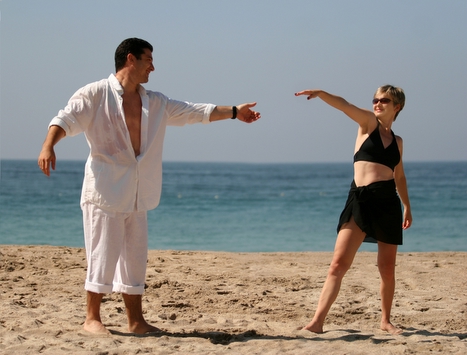Excessive exposure to ultraviolet (UV) radiation is a major risk factor for melanoma ( a deadly form of skin cancer) The main source of UV is sunlight. Tanning lamps and booths are another source. People with excessive exposure to light from this sources have a greater risk of skin cancer.
The amount of UV exposure depends on the intensity of the light, how long you are exposed, and whether your skin is protected. Spending a lot of time outdoor for work or recreation is a big risk factor. Not protecting your skin with clothing and sunscreen also increases, the risk. People who suffer severe, blistering sunburns are at increased risk of developing melanoma.
The risk of melanoma is significantly higher for people with fair skin. This is due to the protective effect of skin pigment. Those with fair skin that freckle or burn easily are at high risk. Just remember that darkly pigmented people can also develop melanoma, particularly at the palms of the hands, on the soles of the feet, under the nails, and inside the mouth.
The most important way to lower the risk of melanoma skin cancer is to avoid excessive exposure to ultraviolet light by staying out of the sun. This is particularly important in the middle of the day when ultraviolet light is most intense. Another simple and effective way to protect yourself is to use clothing. Keep your shirt on when out in the sun. You can use a hat with broad brim. It is impossible to completely avoid sunlight and it is not necessary to do reduce your melanoma risk. Sunscreens with an SPF factor of 15 or more is recommended to protect sun-exposed ares of skin. People with fair skin and people who burn easily must be particularly careful to use sunscreen.

Always follow physician and product directions when applying sunscreen usually wear off with sweating and swimming and must be reapplied .
UV rays are one of the known causes of cataracts a gradual clouding of the eye lens that destroy vision. The effects of sunlight on the eye lens are cumulative and depend on the length of time spent in the sun. Farmers, sweepers, traffic aid are more likely to develop cataracts sooner than office workers. Sunglasses help prevent cataracts. Sunglasses should be dark enough to block at least 75 percent of visible light.
The sun's damage to the eye doesn't stop with cataracts. Exposure to both visible light and UV radiation is also a factor in the gradual degeneration of the retina and in sunburn of the cornea, called snow blindness. You don't have to buy an expensive sunglasses.




 Always follow physician and product directions when applying sunscreen usually wear off with sweating and swimming and must be reapplied .
Always follow physician and product directions when applying sunscreen usually wear off with sweating and swimming and must be reapplied .









